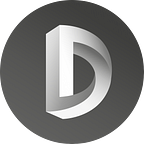AMA Recap: Tixl Partnership Update
DIA Co-Founder Paul Claudius joined the Tixl Telegram channel last week to respond to community questions and give a partnership update with a new collaboration announcement.
Introduction Questions asked by Team Tixl
Paul, please introduce yourself and how you got into blockchain and crypto.
Hi everyone, a pleasure to be here. My name is Paul and I am one of the co-founders of DIA.
I have a background in management and finance, investment banking, private equity and e-commerce. I first got in touch with the space in 2013, like many of us, when by pure coincidence buying my first Bitcoin. Back then, I still could not completely understand the core technology and the implications it would have in finance. In 2016–2017, after some research, clarity and interest, decided to leave e-commerce and fully focus on blockchain. At that time, together with current co-founders, we were setting up smart contracts holding different assets, so what today we would call DeFi :).
And how did that first project lead you to DIA now?
When setting up those smart contracts, the first problem we identified was the absence of transparent data. We needed data on and off-chain. We could not find sources where we could understand where the ETH/USD price data came from, which exchanges or the methodology behind. There was an absence in infrastructure to get that data through API and get that ingested into an oracle and use it on-chain. So that’s how DIA was born, out of a product need we had back then.
In summary, for those who still don’t know, what is DIA?
DIA (Decentralised Information Asset) is an open-source, financial information platform that leverages crypto economic incentives to source and validate data and oracles. The DIA platform provides the infrastructure for market actors to supply, validate, use and share financial data.
Founded in 2018 as a Swiss-based non-profit association, DIA’s mission is to democratise access to financial data, similar to what Wikipedia has done in the broader information space with regard to central encyclopaedias.
What role does DIA play in the current crypto ecosystem?
DIA is an open-source data and oracle provider. To understand the importance of these oracles, it is worth taking a step back and understanding how blockchain works. Blockchains are powerful networks that enable smart contracts but natively can only access internal data of the network to execute these smart contracts. That’s where oracles come into play. Oracles provide data from outside of the network to smart contracts.
Most decentralised applications (DApps), for instance, the ones built on the Ethereum network, require price data points to execute their products. Without this price information, they can not execute transactions.
What makes DIA different from competitors in the space?
DIA’s approach on how data is sourced, computed and delivered is very different to the rest of the oracles in the market. DIA works in a completely decentralised and open-source structure where market actors supply, validate, use and share financial data.
By leveraging the power of the crowd through decentral governance and incentivisation, the community gets rewarded by connecting new data source scrapers to the DIA platform. This results in a very efficient and scalable approach to source data.
All used sources and methodologies are fully transparent and publicly accessible. Finally, the data points are made publicly accessible and delivered through an API or oracles to smart contracts on all major blockchains such as Ethereum, Binance Smart Chain, Polkadot, Polygon, Moonbeam, and more.
Interesting. How did the partnership with Tixl happen? And what is its end goal?
DIA runs an innovation lab called DIA Labs to support and fund innovative projects that connect the DeFi ecosystem with trusted data. It’s a nucleus for experimentation, networking and engagement. One of DIA Labs is the DeFi ecosystem development, carried out by funding projects such as Tixl.
Besides an investment into TIXL through DIA Labs, DIA is excited to support the team with expertise, a broad industry network and verified data feeds. Tixl stands to benefit in multiple ways from DIA’s trusted oracles to enable both layer 1 and layer 2 capabilities. The DIA Labs investment will be leveraged to speed up the development of Tixl’s core products. We are strong believers in Tixl’s technology and mission, which is why we are happy to commit to long-term vesting.
Community questions
What is the DIA Token used for?
Thx for the question. DIA is a DAO and is governed by the DIA governance token. It enables the DIA token holders to participate in the governance decisions but also in product-related matters.
We are opening continuously different parts of the DAO to vote upon. This includes already today usage of treasury and continuous in validation of new data sources as a next step. Apart from that, we are announcing in the coming days an update on an additional utility of the token. So stay tuned for this upcoming announcement!
Is there any update since the partnership was announced?
Actually yes! Tixl recently decentralised its ERC20 — BEP20 cross-chain bridge. A very innovative and solid product to efficiently bridge Ethereum tokens to the Binance ecosystem. The bridge works with one or multiple oracles that can trigger the release of tokens. The oracle address is created in a key generation ceremony of 3 participating nodes.
I am very excited to announce here today that DIA is hosting one of the three nodes, supporting the decentralisation of the bridge. More news on this topic will follow soon, so stay tuned!
